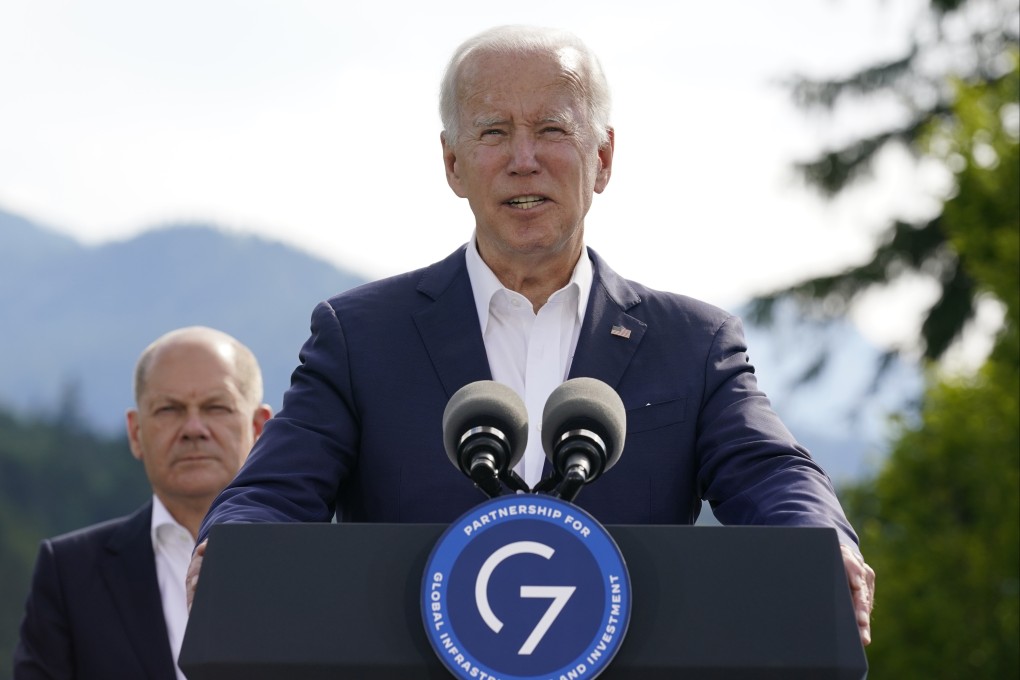Advertisement
Biden unveils US$600 billion global infrastructure plan at G7 summit to counter China’s Belt and Road
- Clean energy, secure communications technology and health systems among focus areas for programme funded by grants, federal financing and private sector
- Five-year arrangement updating last year’s Build Back Better World initiative meant to offer alternative to ‘debt traps’, US official says, in swipe at Beijing’s model
Reading Time:2 minutes
Why you can trust SCMP
99+

US President Joe Biden announced plans to raise US$600 billion for the G7’s global infrastructure programme to counter China’s Belt and Road Initiative.
Biden revealed the plan in a speech on Sunday as he attended the first of a three-day Group of Seven meeting in Elmau, Germany, alongside his six counterparts from the world’s most developed economies.
“Together with G7 partners, we aim to mobilise US$600 billion by 2027 in global infrastructure investments,” the White House said on Sunday following Biden’s announcement.
The official launch of the G7 initiative – the Partnership for Global Infrastructure and Investment (PGII) – amounts to a revamping of the Build Back Better World initiative introduced at last year’s annual meeting. The PGII seeks to offer an alternative to infrastructure models that sell “debt traps,” a US official said.
The US would mobilise $200 billion for the initiative over the next five years “through grants, federal financing, and leveraging private sector investments”, the White House said, noting these projects would focus on clean energy, secure communications technology, health systems and other areas.
“This will only be the beginning,” it added, with the US and its G7 partners intent on ushering in “hundreds of billions in additional capital from other like-minded partners, multilateral development banks, development finance institutions, sovereign wealth funds, and more”.
Advertisement